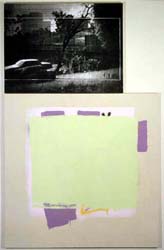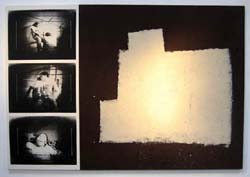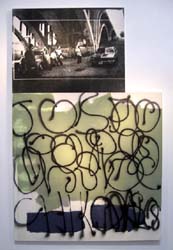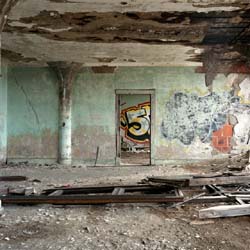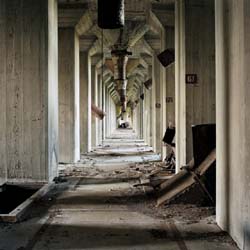WENDY BURTON: Trace Elements III
September 3- October 4, 2008
Reception: September 6, 4-6pm
EXHIBITION INFORMATION
On September 3rd, Craig Krull Gallery will open its third solo exhibition of the work of Dennis Hopper. Concurrent with his distinguished career as an actor and director, Mr. Hopper has been highly regarded as a photographer and painter. In the sixties, he was part of the seminal group of L.A. artists that included Ed Ruscha, Ed Kienholz and Wallace Berman. In fact, Hopper’s photo “Double Standard” appeared on the announcement for Ruscha’s second solo exhibition at Ferus gallery in 1964. Hopper’s photographs of the L.A. art scene, the Civil Rights Movement, Hells Angels, poets and musicians have become virtual icons of the period, collected in his 1986 book, Out of the Sixties. His paintings and assemblages were first exhibited at the Primus Stuart Gallery in Los Angeles in 1964. The exhibition at Craig Krull Gallery will feature assemblages of painting and photography created in the early 1990s. These works reflect the graffiti and street life of Hopper’s own Venice, California, and the harsh realities of inner-city life in general. Black and white photographs of police and gangs are juxtaposed with paintings that resemble walls of whitewashed graffiti. Hopper’s work addresses the constant exchange between tagger and those that paint over the tag. The squares and rectangles of subtly different colors, that don’t quite match the original wall color, suggest a street version of an Ad Reinhardt painting. Mr. Hopper is the subject of a major retrospective this fall organized by the Cinematheque Francaise in Paris.
In, Wendy Burton’s fourth solo exhibition at Craig Krull Gallery, entitled Trace Elements III, the artist continues to explore abandoned and decaying structures as subjects for her photographic archaeology of the not so distant past in American civilization. These vacant buildings are often the product of what Burton refers to as the “rust belt,” areas where industry has moved on, resulting in the disintegration of entire communities. In Tema Celeste, Shana Nys Dambrot wrote, “…these are undeniable compelling subjects, saturated in a sort of rural collapse…yet the morbid lyricism of Burton’s tone is suggestive rather than judgmental…[their] meaning built on cobwebs and ghost stories.” This exhibition also includes a portfolio of images entitled, “What Remains,” made in post-Katrina New Orleans.
